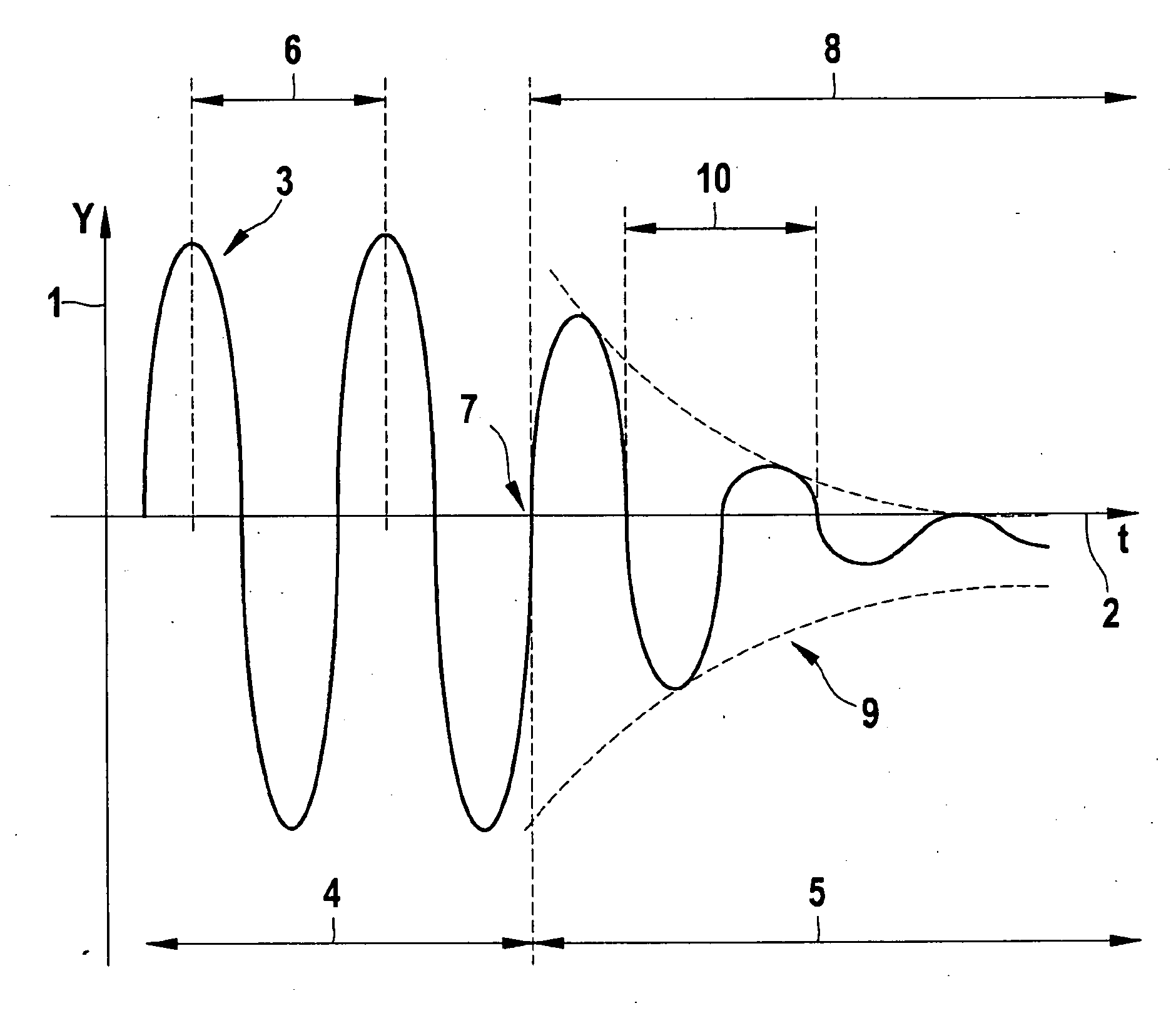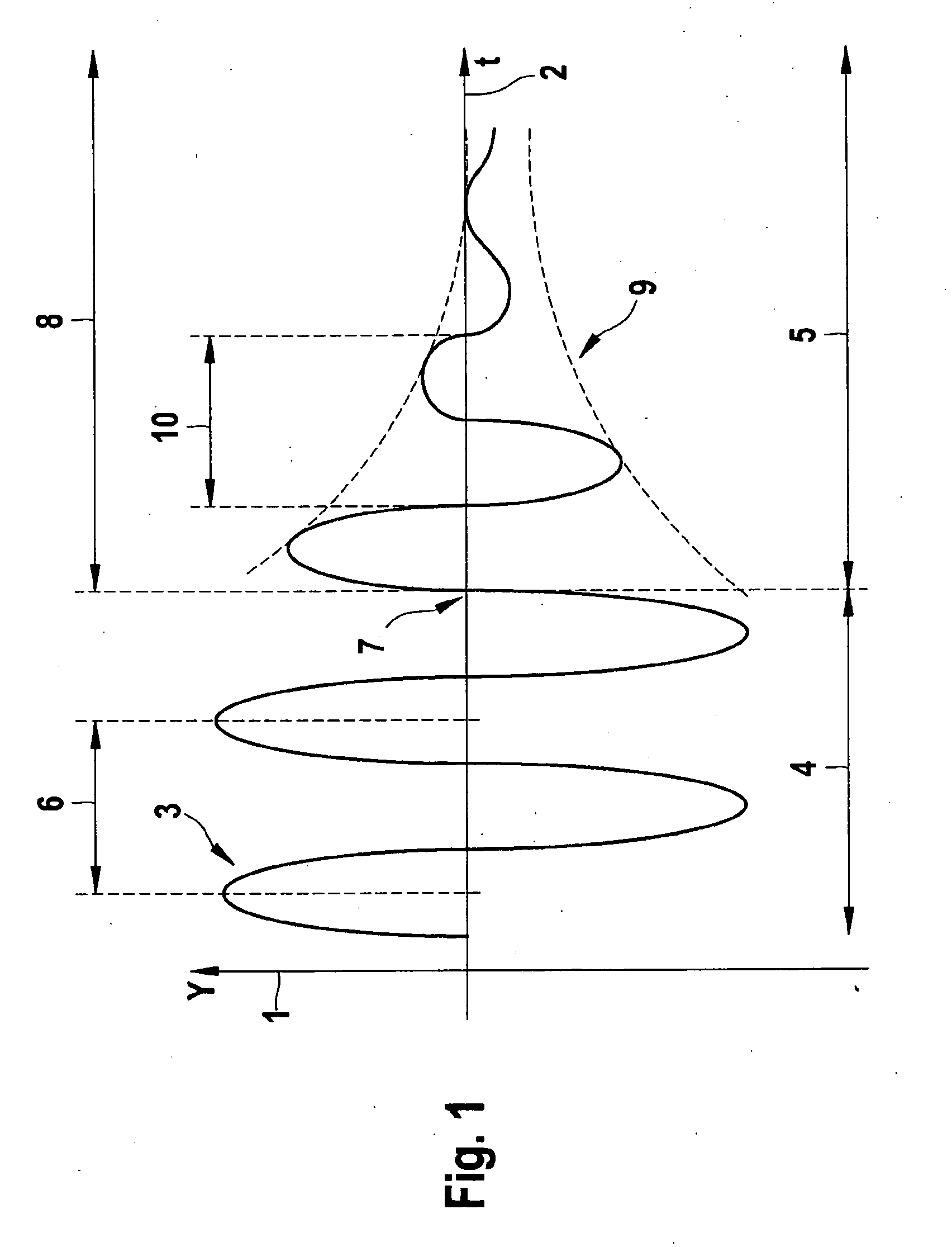Sensor function for controlling at a variable transmission frequency for the purpose of detecting contamination
a technology of transmission frequency and vibration sensor, which is applied in the direction of instruments, structural/machine measurement, and reradiation, etc., can solve the problem of resonant frequency deviating from the original uninfluenced resonant frequency of harmonic oscillator
- Summary
- Abstract
- Description
- Claims
- Application Information
AI Technical Summary
Benefits of technology
Problems solved by technology
Method used
Image
Examples
Embodiment Construction
[0024]FIG. 1 shows the amplitude time characteristic of a vibration pulse of a vibration component of the vibration sensor, in which deflection Y of the vibration component from its neutral position (1) has been plotted over time axis (2) as signal characteristic (3). The amplitude time characteristic is subdivided into the regions of the excitation (4) and the region of the post-vibration process (5). The vibration component is excited by a periodic excitation signal having period duration (6) for the forced vibration at a given unvarying amplitude. In the process, the harmonic oscillator, i.e., the vibration component, vibrates at the frequency of the excitation signal (reciprocal value of the period duration of the excitation) and thus executes a damped mechanical vibration.
[0025]After the excitation signal has been switched off, i.e., at instant (7), the harmonic oscillator vibrates freely. Because of the provided damping, the vibration amplitude decreases along region (8) durin...
PUM
 Login to View More
Login to View More Abstract
Description
Claims
Application Information
 Login to View More
Login to View More - R&D
- Intellectual Property
- Life Sciences
- Materials
- Tech Scout
- Unparalleled Data Quality
- Higher Quality Content
- 60% Fewer Hallucinations
Browse by: Latest US Patents, China's latest patents, Technical Efficacy Thesaurus, Application Domain, Technology Topic, Popular Technical Reports.
© 2025 PatSnap. All rights reserved.Legal|Privacy policy|Modern Slavery Act Transparency Statement|Sitemap|About US| Contact US: help@patsnap.com



